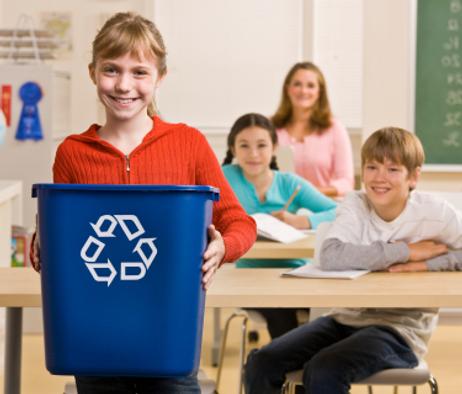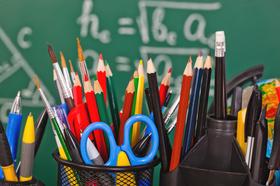Although public schools strive to teach students about conservation and environmental care, all campuses certainly produce their own waste. With classroom papers, copies, trash, packaged lunches, electricity, and other resource needs, some public school leaders are striving to reduce each campus’ carbon footprint.
To help schools and students embrace a more responsible environmental approach, many school leaders are implementing new “green-focused” programs to improve both the performance of schools and the education of students.
This video reports on green-friendly schools worldwide.
Greener Public School Reform
To help boost individual school responsibility, there are an array of programs and renovations that aim to “green-ovate” public schools. With “green ovations,” public schools implement environmentally friendly technologies or changes to improve the energy savings and output of the school.
For example, as Fox News and Business reports, EcoMedia, an environmental media company, paired itself with the CBS Corporation to award three schools with new environmentally friendly makeovers. With over $600,000 dollars invested into new products and services to help revamp the three chosen schools, EcoMedia and CBS aim to help with “green ovations” such as:
- Solar and wind projects
- Energy-efficient lighting
- Green roofs
- Internal and external green upgrades
While EcoMedia and CBS sought to reward winning schools with green renovations, many experts assert that public schools across the country are striving to find ways to implement their own eco-friendly changes. Specifically, as USA Today reveals, rising energy costs and the dwindling economy are inspiring and even forcing, many public schools to change their wasteful ways to minimize costs. In fact, since 2000, nearly 100 schools across the country have been newly certified as eco-friendly by the U.S. Green Building Council. Adding to this rising number, nearly 800 additional schools are now seeking certification with their recent green changes.
As USA Today explains, “Classrooms are slowly going green, prodded by rising energy bills, public health concerns and a general desire to adopt eco-friendly principles.” Examples of new green changes in schools include, in the case of some Washington public schools, waterless urinals, solar panels, and geothermal cooling systems.
While these new technologies cost more upfront, nearly 1 to 2 percent more for added building costs, experts argue that the schools profit in the end with lower energy and utility bills.
Adding to this perk, data also suggests that new green renovations are actually boosting student performance! In various studies and investigations, school leaders are finding that with new green technologies, students are now scoring higher on tests and in their general performance assessments. The exact reason for this rise is still generally unknown, but some educators assert that the “greener” school environment instills a stronger spirit of accountability and responsibility—which is a lesson that is perhaps extending into students’ homework, studying, and academic performances.
This TEDx Talk looks at safe, environmentally-freindly schools.
New Eco-Friendly Initiatives
To continue this positive trend, several states, such as Hawaii, Florida, and New Jersey, are now requiring that all public school buildings become more energy efficient and eco-friendly.
Adding to this requirement, the US House of Representatives even sent a bill to the Senate that requires all schools to be built with green and eco-friendly elements. To support this renovation, the House of Representatives asserts that federal money and assistance would fund these projects.
Leading the way to a greener future, Ohio has been the top state to implement incredible green innovations. With the funds from a major legal settlement between the state and tobacco companies, Ohio is now planning to build 250 new green schools over the course of two years. With this remarkable plan, Ohio’s officials predict that the state will save around $1.4 billion dollars in energy costs over the next four decades.
What about Student Learning?
In addition to school-wide changes, public schools across the country are experimenting with classes and programs to expand student knowledge regarding environmental issues. For example, public schools in Mobile County, Alabama, strive to enhance student learning with an Environmental Studies Center, where expert teachers educate all local public school students about environmental issues. Needless to say, Mobile County is not the only school offering unique learning opportunities. An array of public schools is now participating in national water conservation programs, recycling initiatives, and additional eco-friendly programs. With the new changes and opportunities, leaders assert that green education is helping to pave greener pathways to the future.
Questions? Contact us on Facebook. @publicschoolreview












